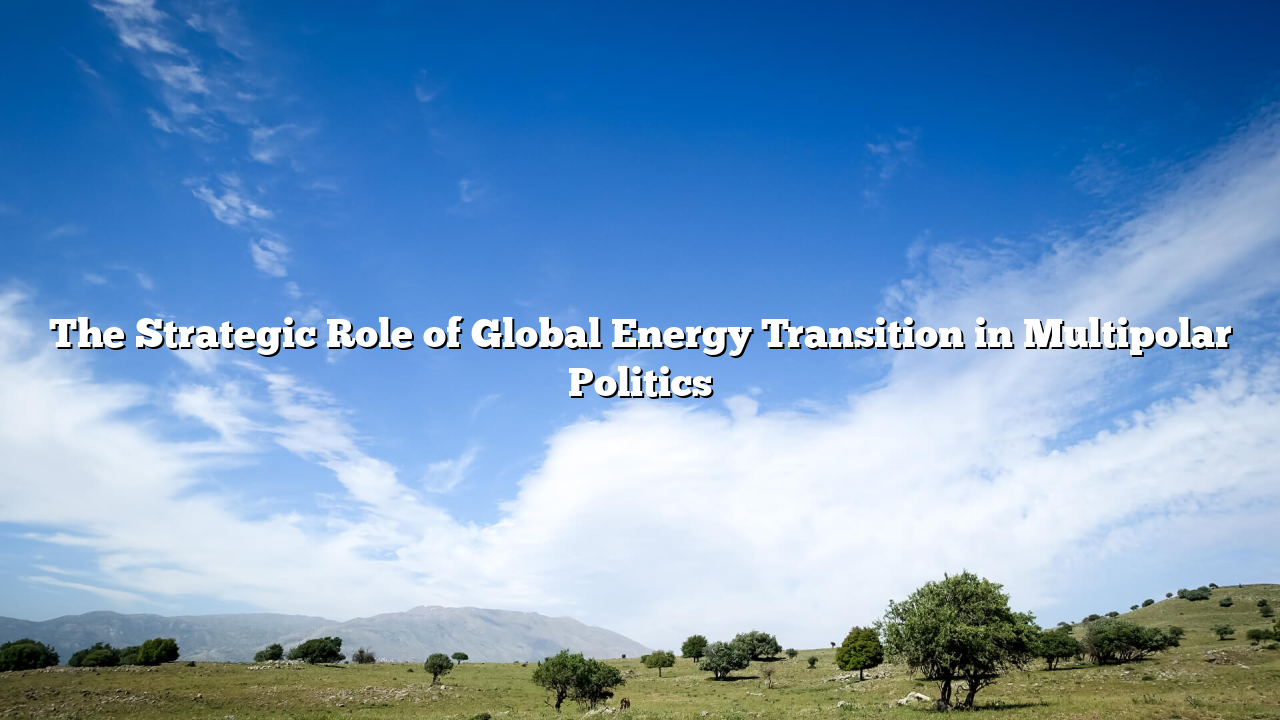The global energy transition has emerged as a central arena of strategic competition in the multipolar world. Beyond environmental considerations, the shift from fossil fuels to renewables, hydrogen, and advanced nuclear technologies is redefining Pokemon787 alternatif industrial competitiveness, geopolitical influence, and long-term economic alignment. States that control energy transition technologies, infrastructure, and supply chains gain structural leverage in global politics.
China has positioned itself at the forefront of renewable energy development. Investments in solar panel manufacturing, wind turbine production, electric vehicle battery supply chains, and green hydrogen projects allow Beijing to dominate critical sectors of the energy transition. By linking Belt & Road partners to Chinese energy technology and financing, China creates structural dependencies: countries adopting Chinese infrastructure and standards integrate into Beijing’s operational and industrial ecosystem, increasing long-term influence and shaping policy alignment in energy and industrial governance.
The United States pursues a dual strategy combining domestic technological leadership with allied coordination. Initiatives under the Inflation Reduction Act, research investment in advanced batteries and hydrogen, and partnerships with European and Indo-Pacific allies aim to secure supply chains, industrial capacity, and technological dominance. By ensuring interoperability of energy infrastructure and standards across allied states, Washington consolidates strategic influence while promoting resilience against geopolitical disruption.
Europe emphasizes regulatory and standard-setting influence. The EU’s Green Deal, carbon border adjustment mechanisms, and renewable energy certification create incentives for global adoption of European practices. Brussels leverages regulatory compliance, investment support, and technological collaboration to embed influence in energy infrastructure and industrial networks, using normative and economic tools to achieve structural strategic leverage.
Emerging economies face critical choices in the energy transition. Southeast Asia, Africa, and Latin America must balance rapid industrial growth with adoption of foreign technologies and standards. Aligning with dominant powers can provide access to capital, expertise, and technology, but may create long-term dependencies. Independent pathways require significant investment but preserve industrial and policy autonomy, demonstrating the strategic implications of energy decisions in a multipolar world.
The strategic significance of the energy transition extends beyond electricity generation. Control over battery production, grid infrastructure, and renewable technology enables states to influence trade flows, industrial competitiveness, and geopolitical alignment. Nations leading in these sectors gain leverage across allied and partner economies, embedding long-term operational and industrial influence without direct confrontation.
The structural lesson is unmistakable: energy transition is not merely an environmental or technological issue—it is a geopolitical instrument of power. Countries that master renewable technologies, industrial supply chains, and regulatory frameworks secure enduring influence, while those dependent on external sources risk structural vulnerability, reduced industrial autonomy, and diminished strategic leverage.
In conclusion, the global energy transition is a decisive factor in the multipolar order. Control over renewable energy, advanced technology, and infrastructure functions as a strategic instrument of statecraft, shaping industrial competitiveness, diplomatic alignment, and long-term global influence. The next decade will solidify which nations command the new energy architecture of the world.
